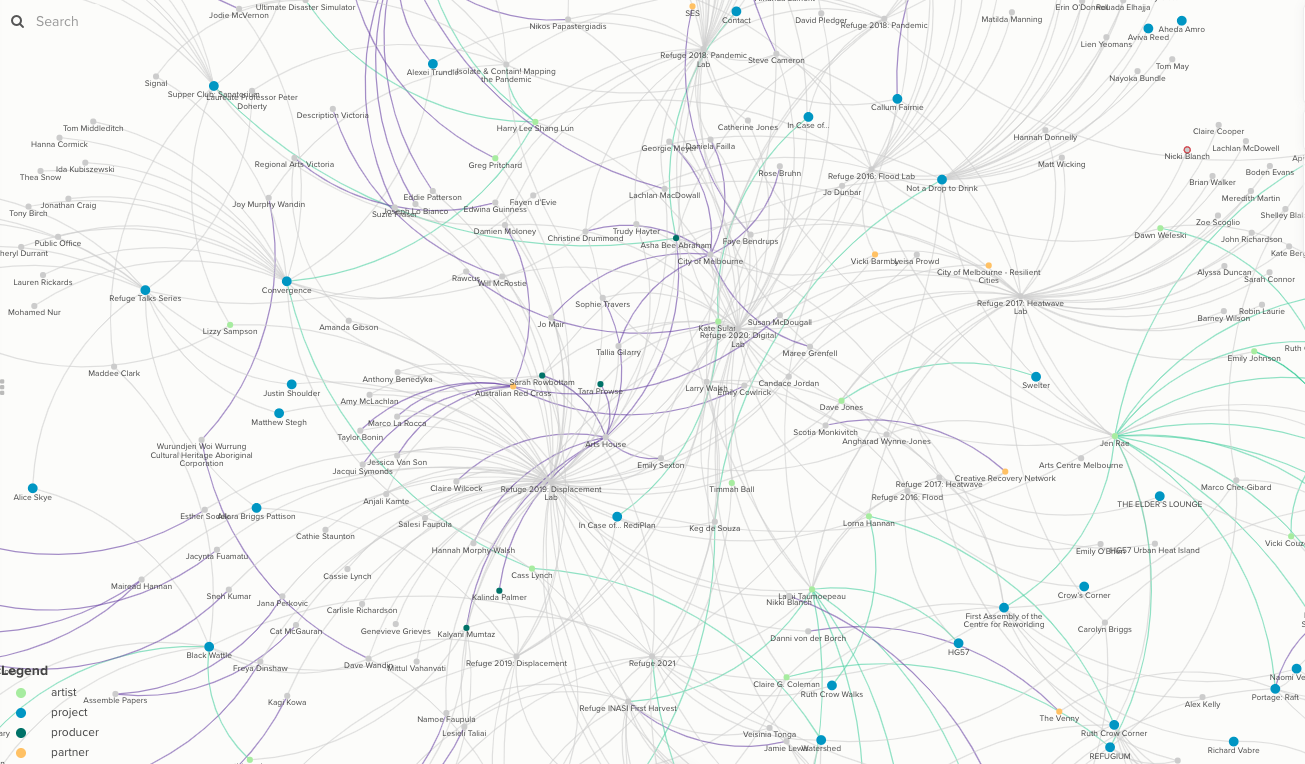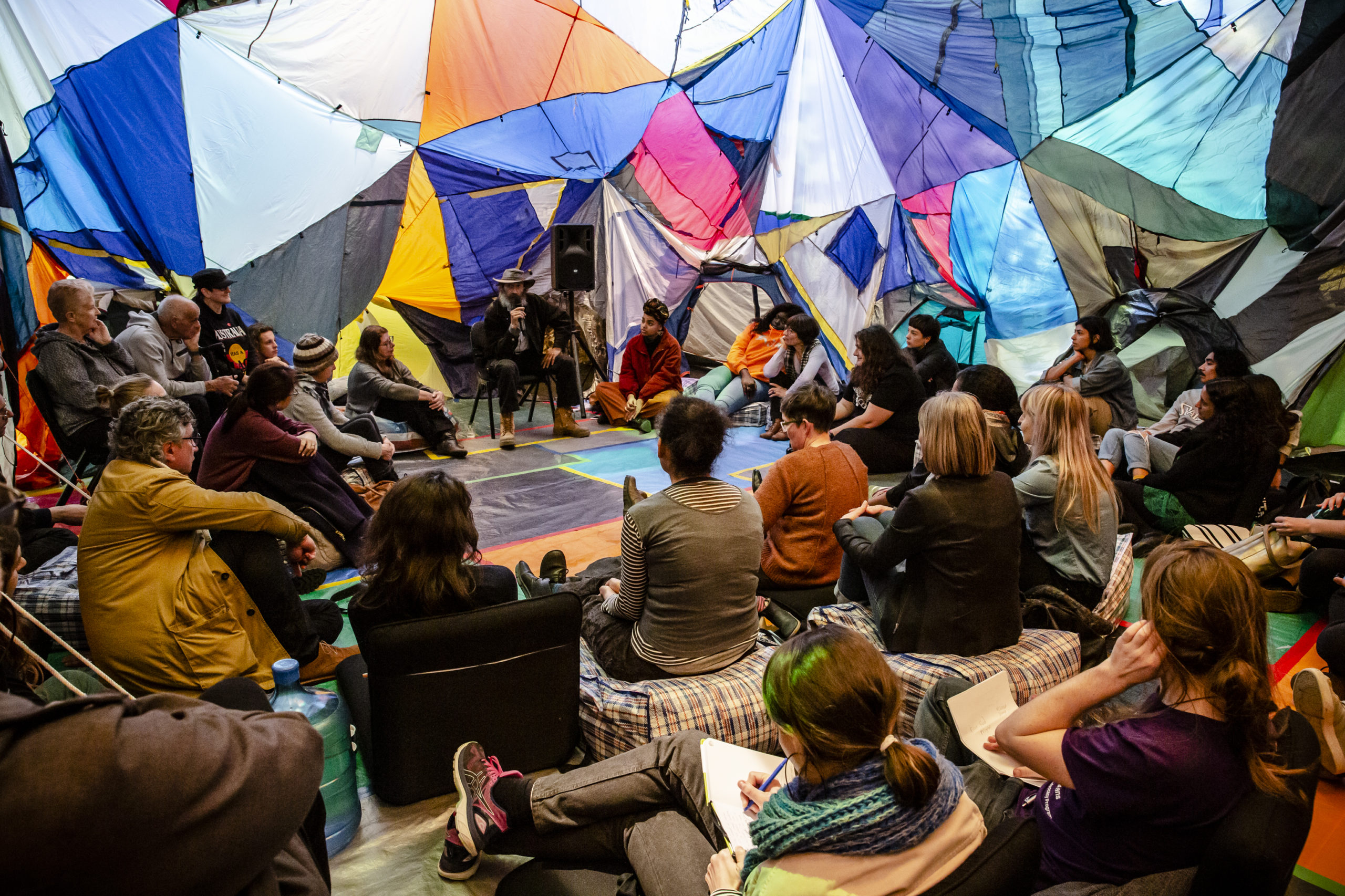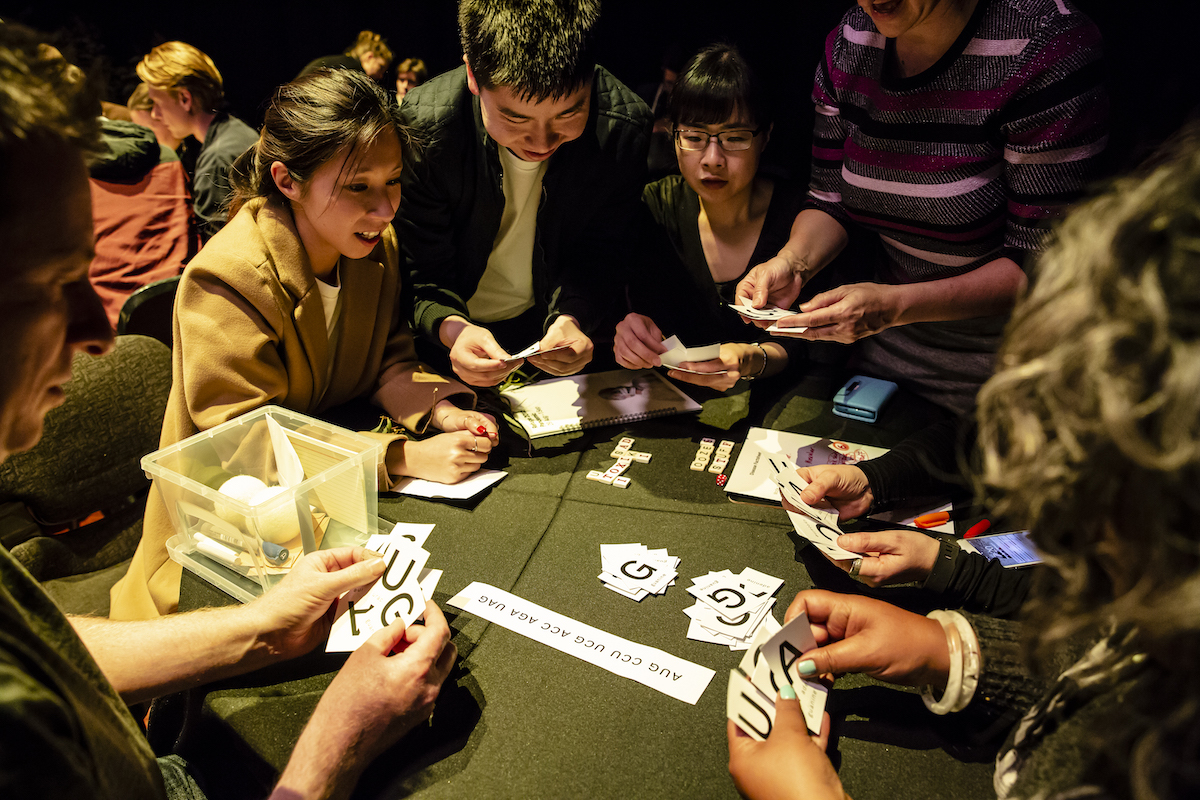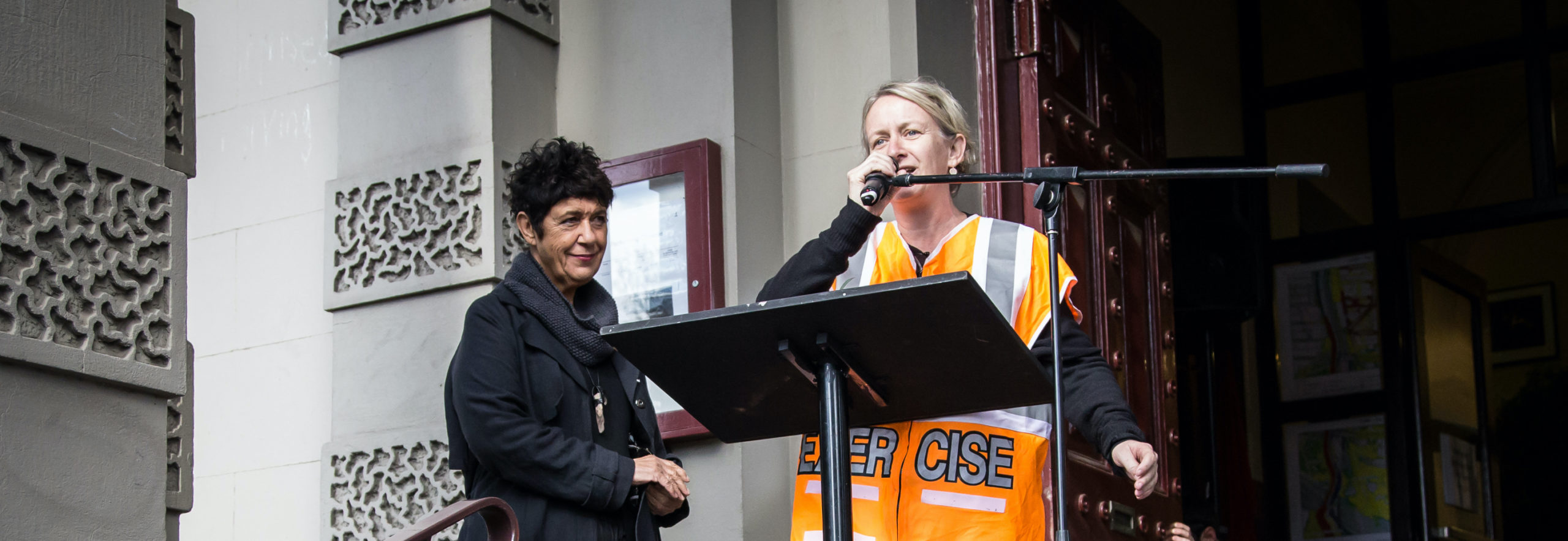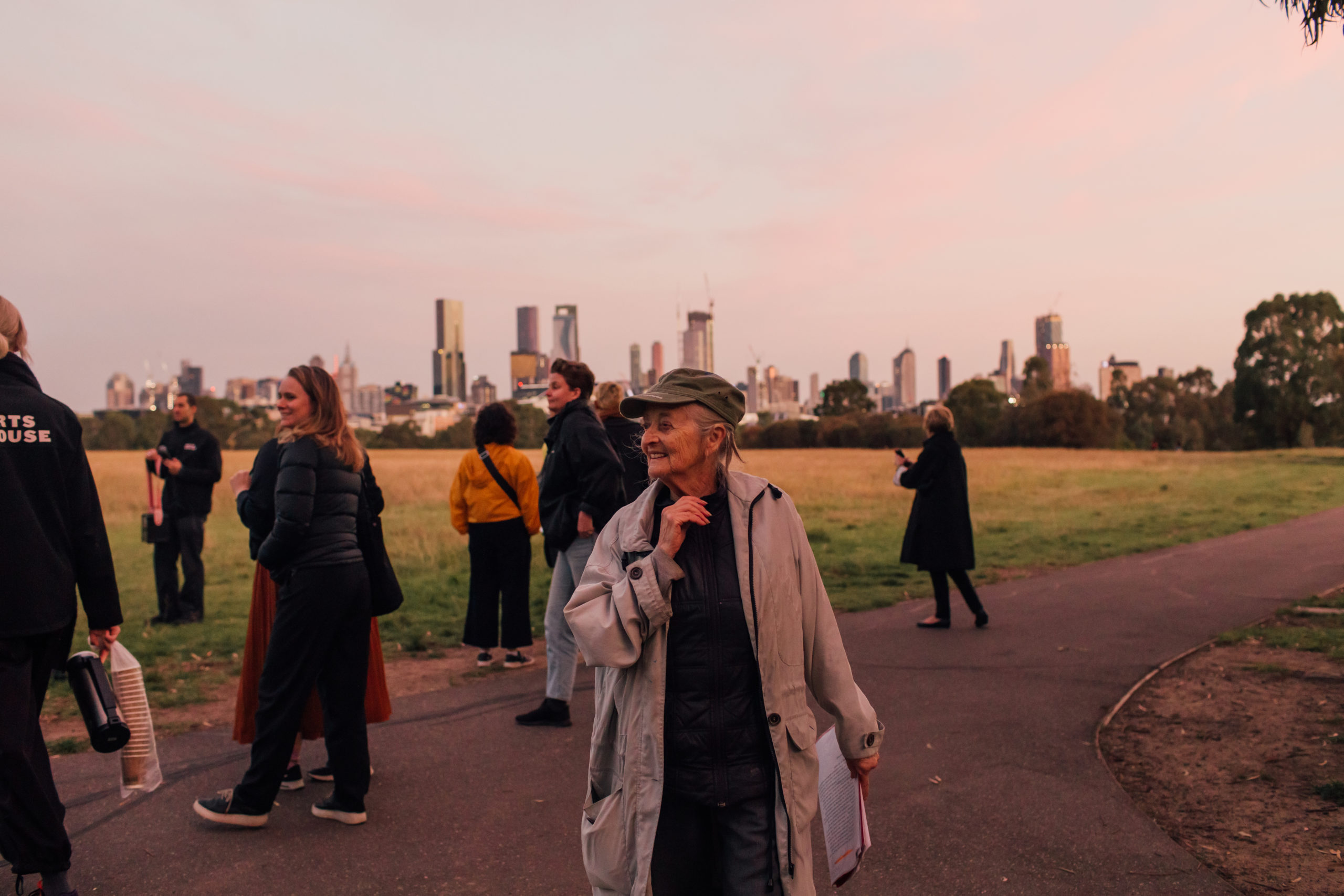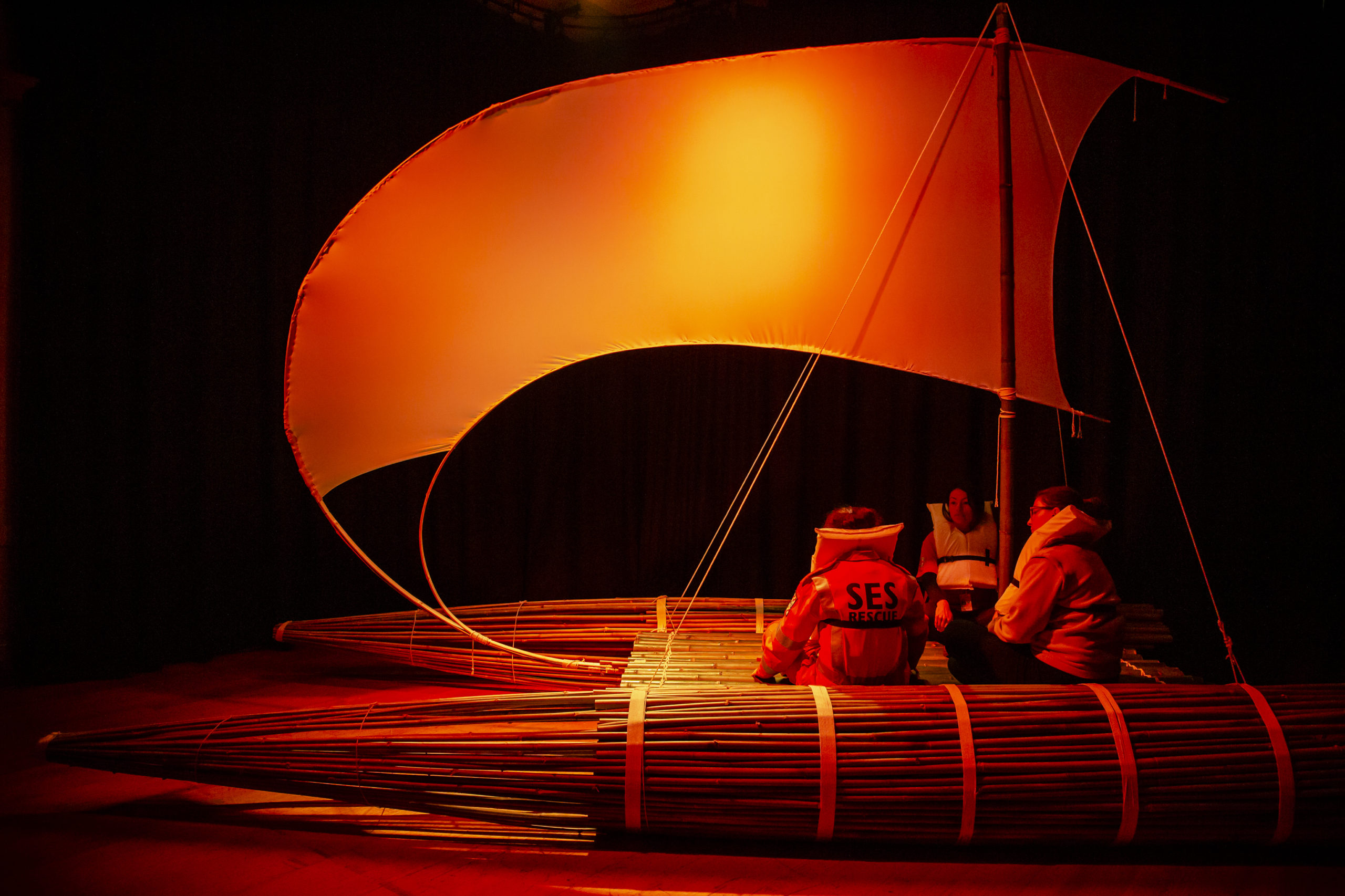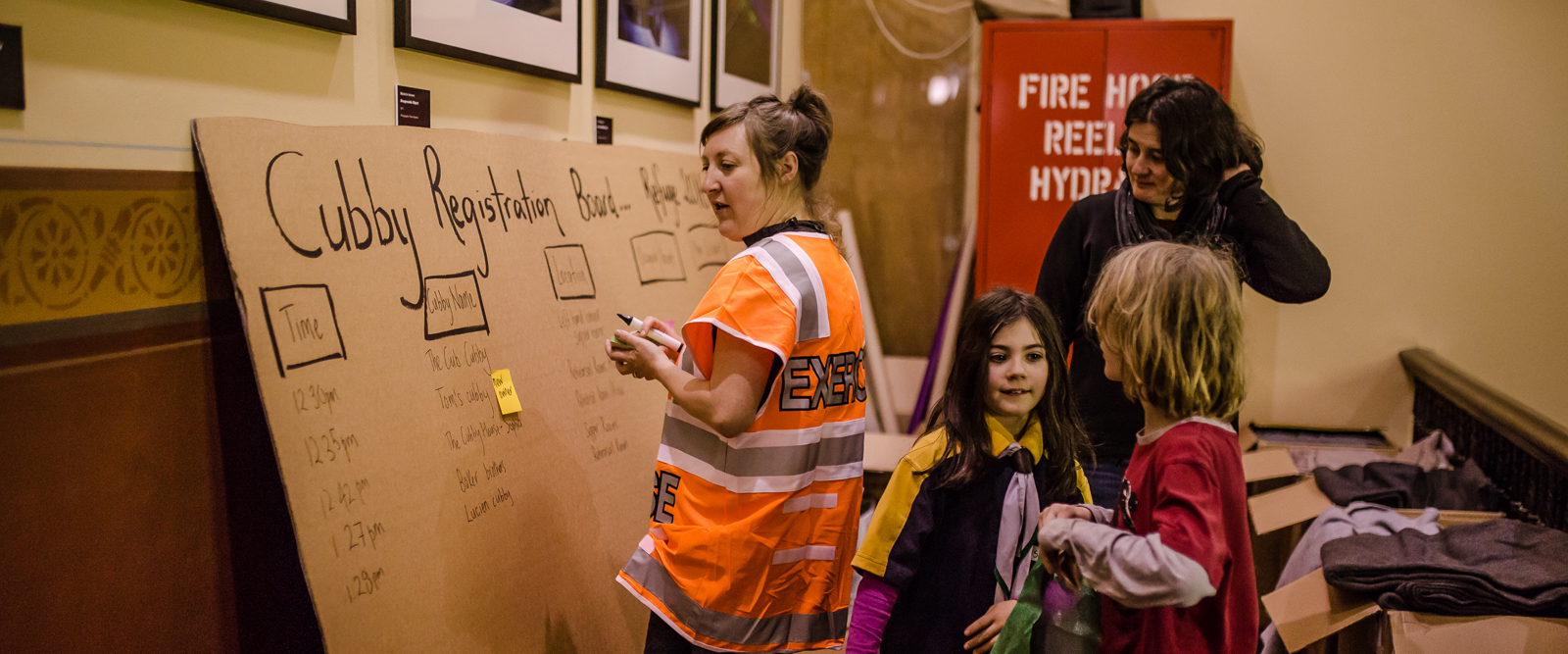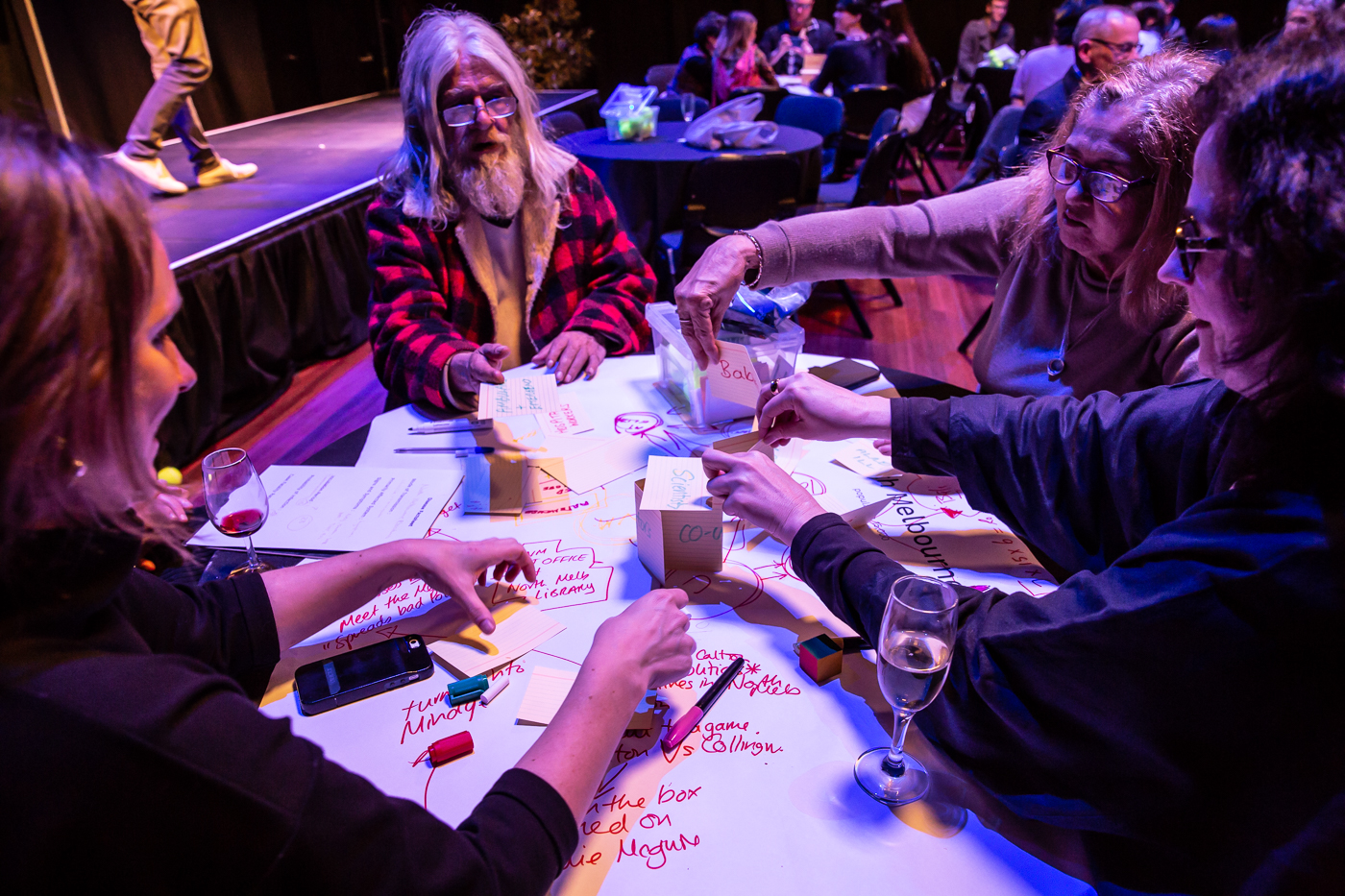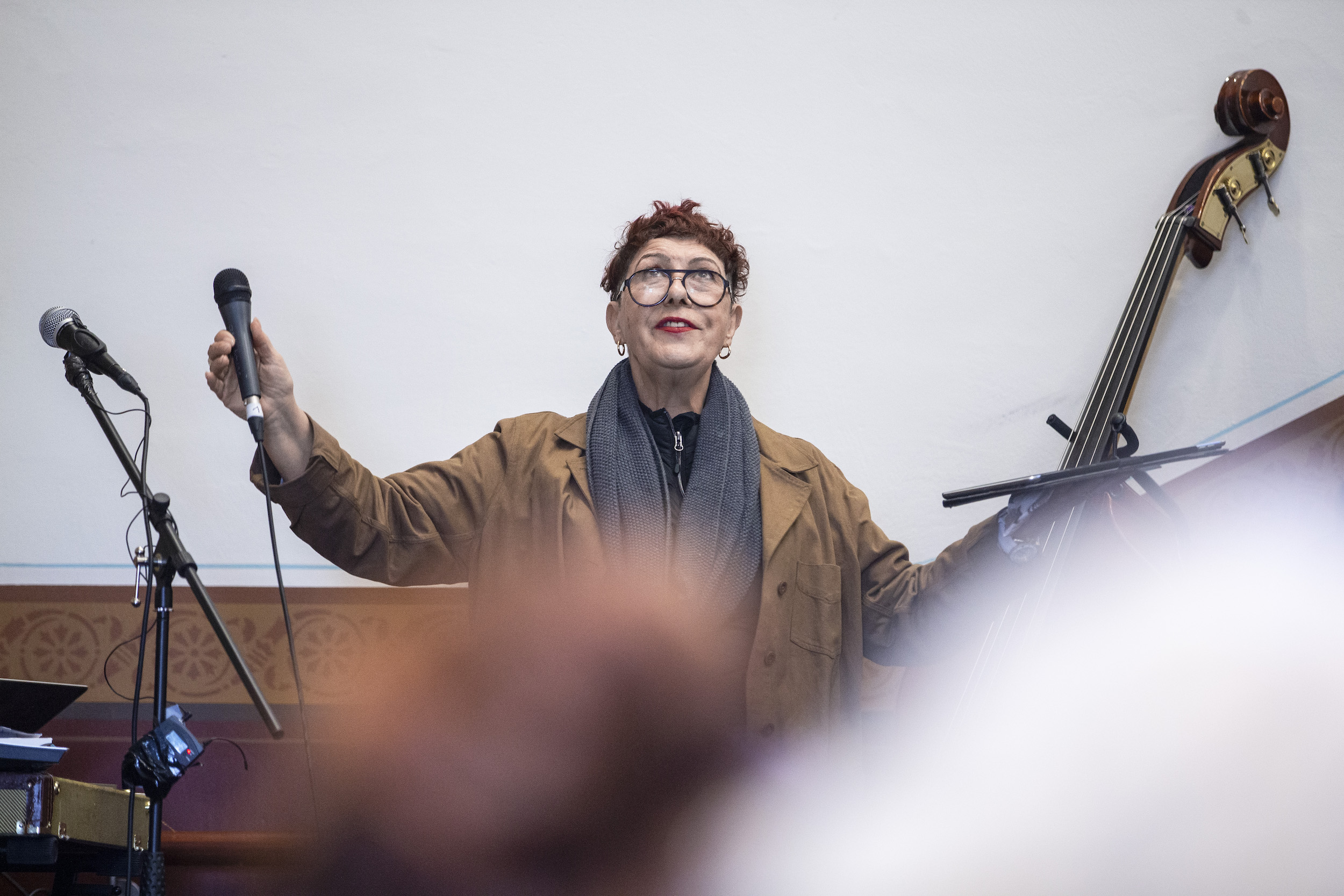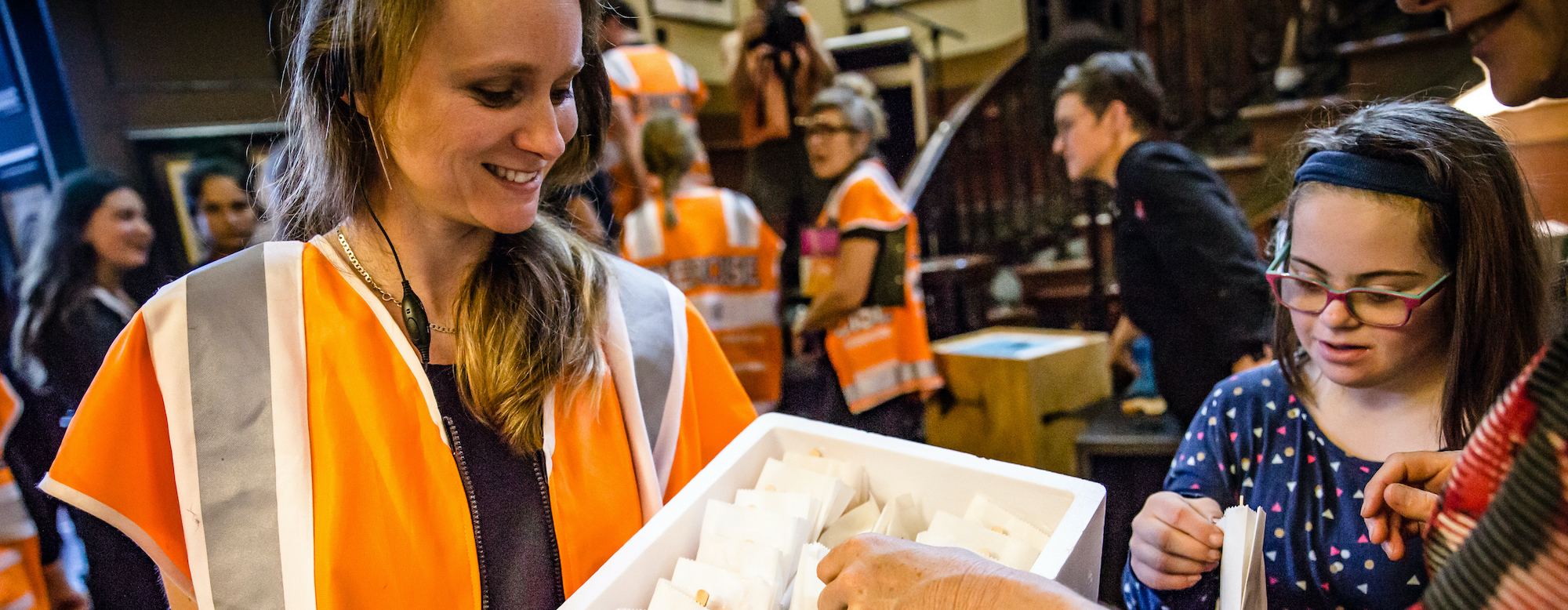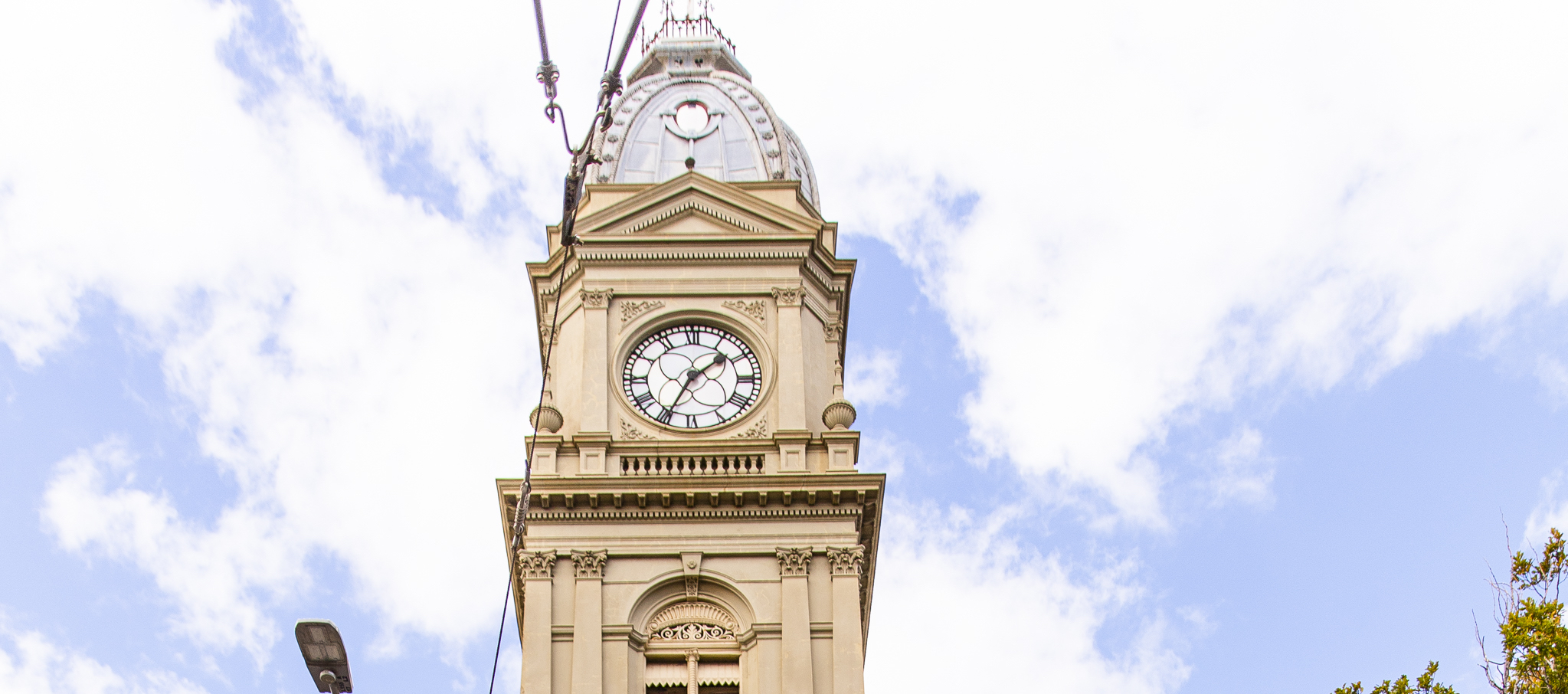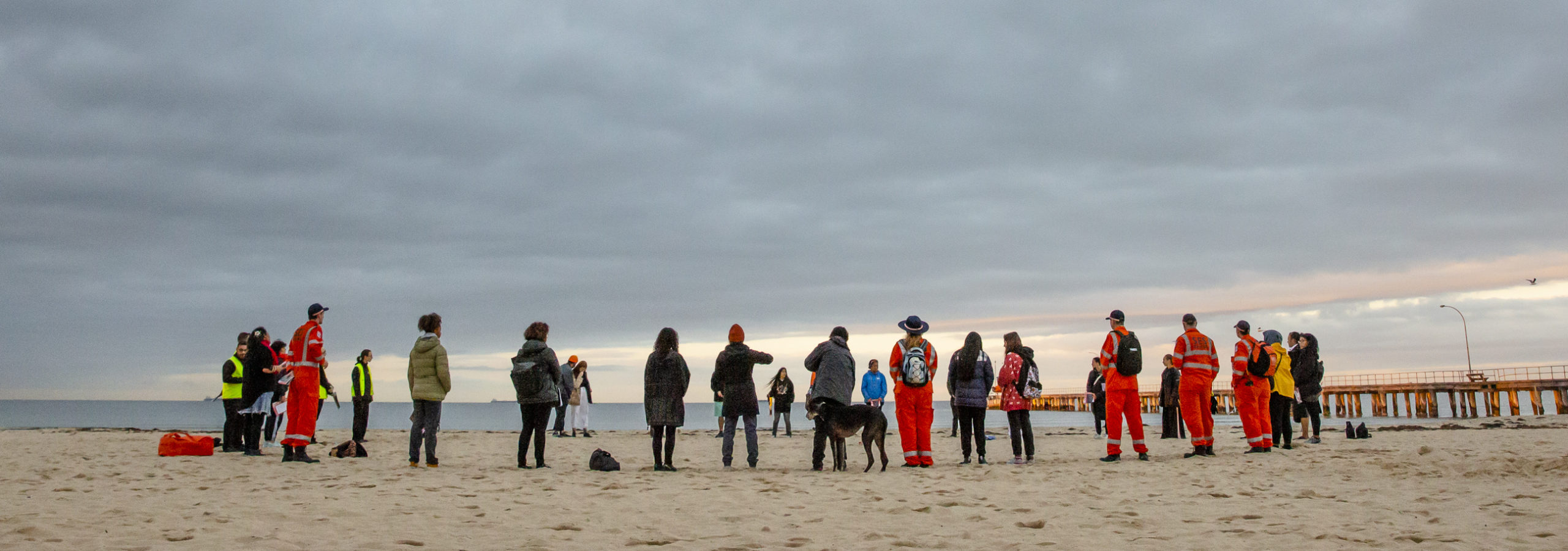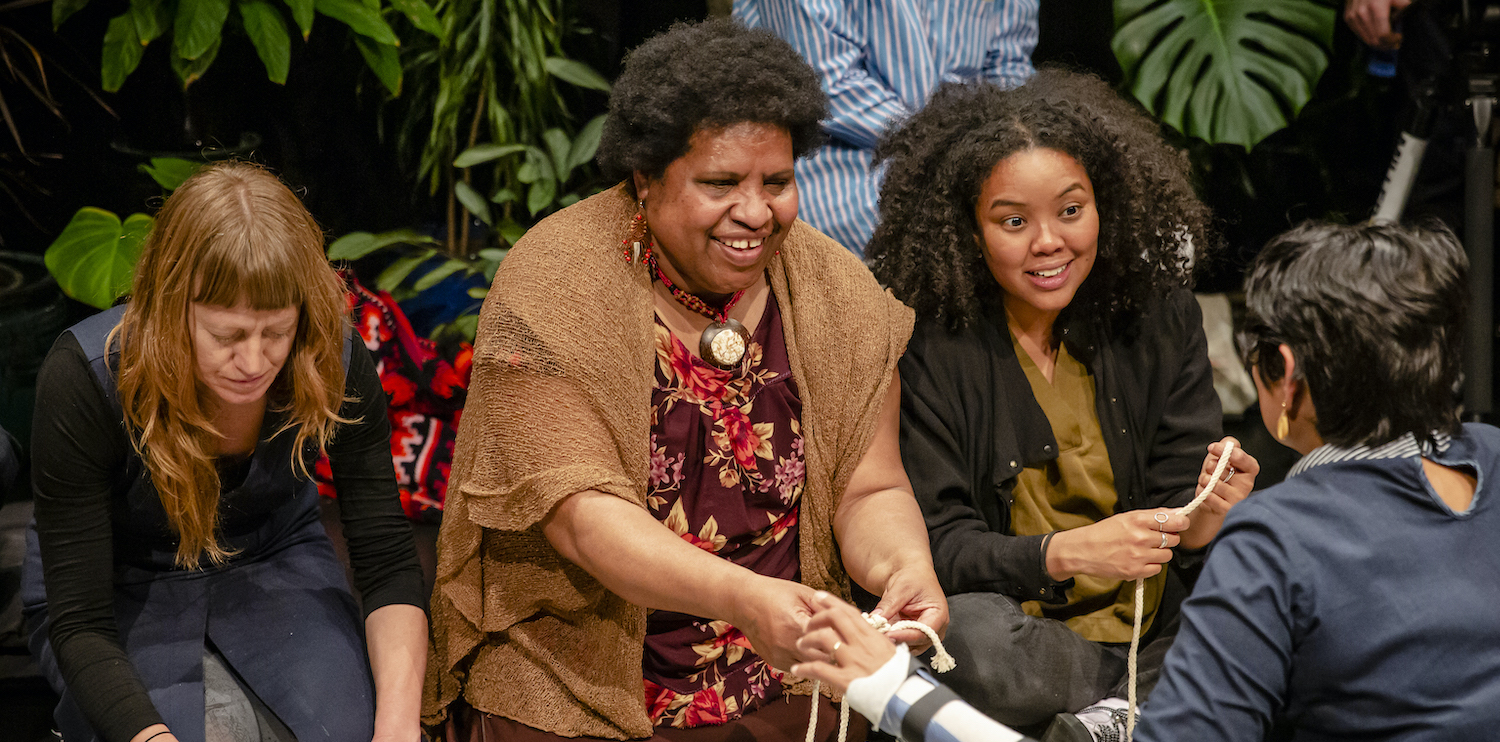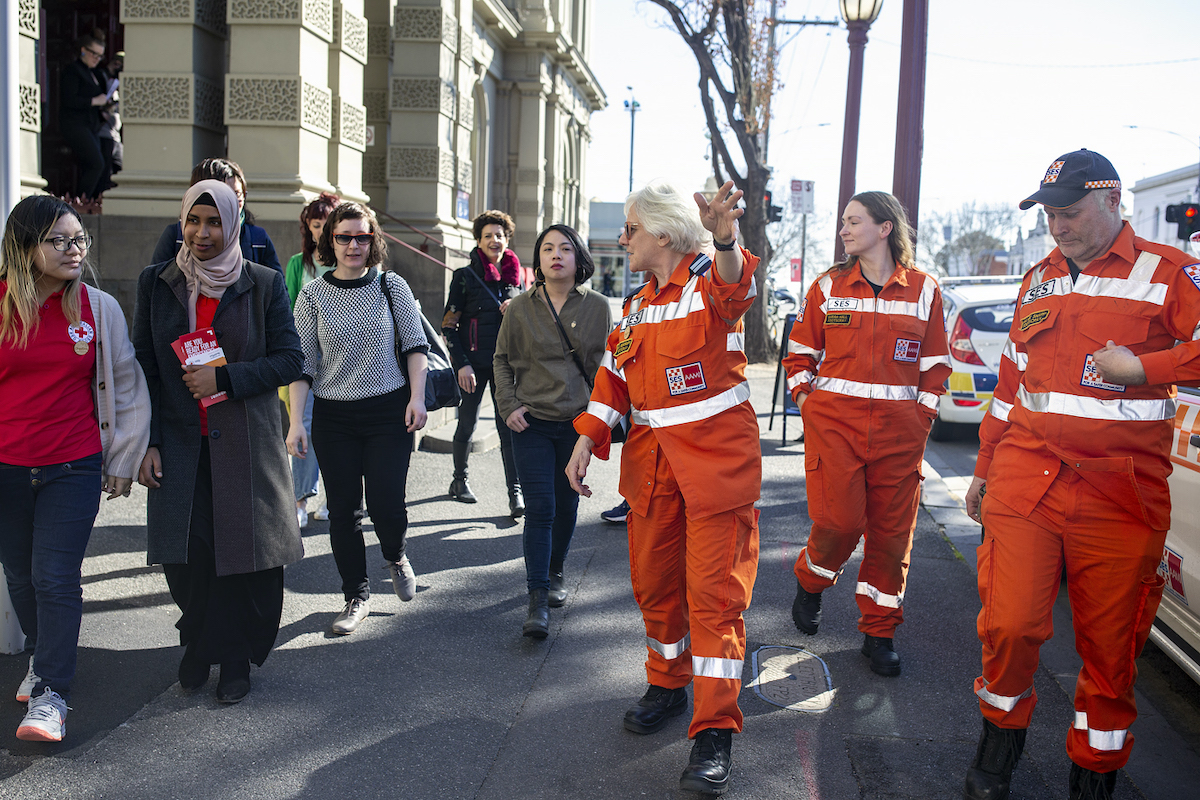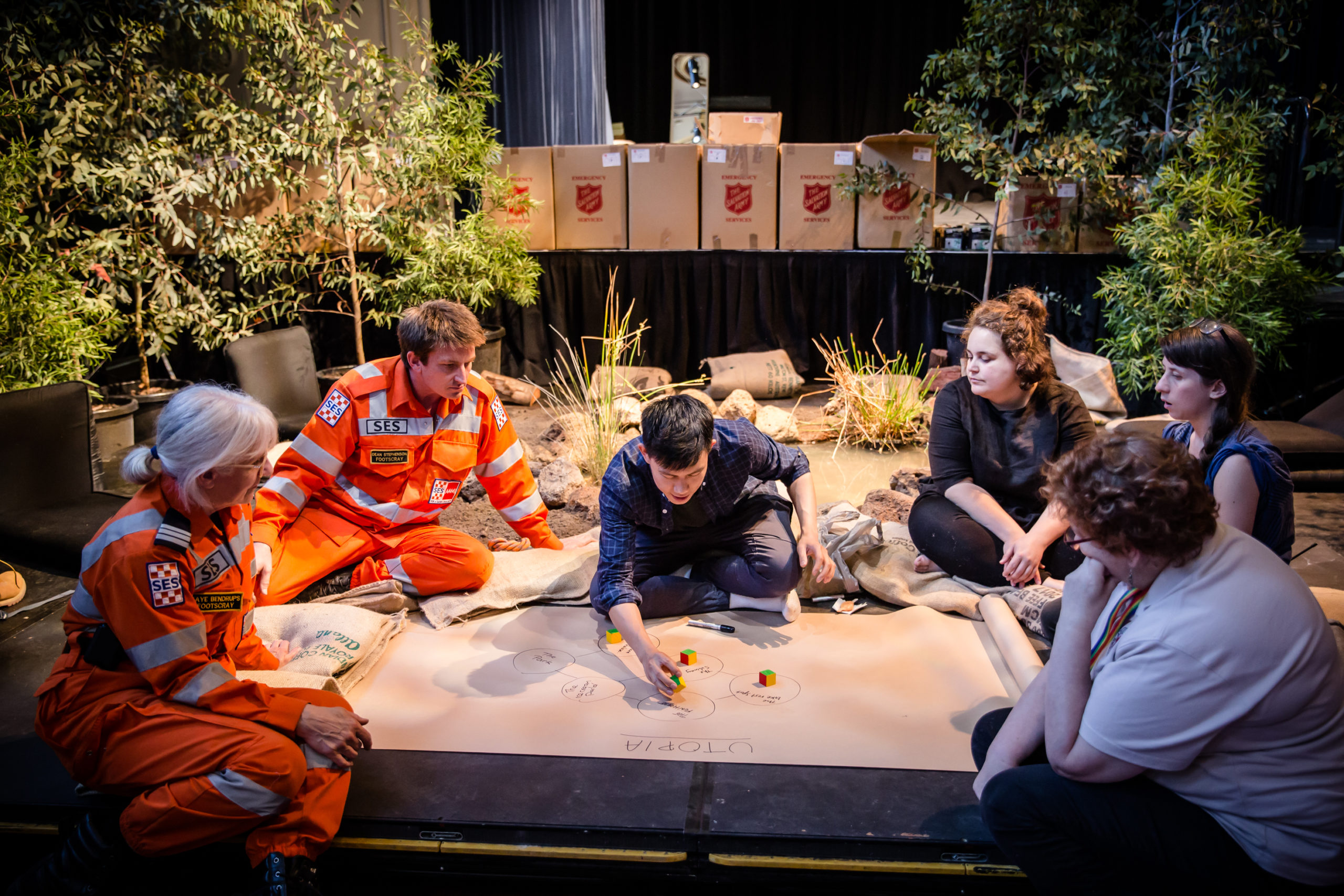Building community over time
Uncle Larry Walsh
This piece is from the collection, In The Time of Refuge.
Excerpt from a conversation between Taungurung Elder Uncle Larry Walsh and Refuge Creative Producers Tara Prowse and Sarah Rowbottam.
Recorded on 5 August 2021
Tara Prowse
Can I ask you Uncle Larry about the first year of Refuge and what your memories are of coming into the project, even the sleep-over in that first year? And how you saw things shift over the six years that you’ve been involved?
Uncle Larry Walsh
Sleepover over was all right because everyone got to know each other. Because you’re working on the whole project together. It’s given (people) a broader understanding even amongst themselves. I think, if you were to rate it, there has been more talking now amongst some of those groups that may never have communicated (with each other). If you like, the first one set it up so that was a safe enough space for everyone to talk across each other about different things.
So that for me was a good bonding exercise from the first to the last. It helped to create more communities talking amongst themselves. It helped open the door to multi-ethnic groups – that’s always been a very slow thing. The communities mainly stay within themselves, so you’ve got to have other ways of opening to communicate and I think that helps a lot from the beginning right through. So, it was how it was set up to make people feel they could relax and do that, maybe that’s a good bit to do with it. Setting that in motion. That’s one of the things I take from it: how the doors of communication are opening, not fully, but they are opening a lot more than they were before.
Tara Prowse
I remember Aunty Vicki sleeping under her possum skin cloak that night, because it was cold out in the warehouse.
Uncle Larry Walsh
In some ways it set the ground rules for future ones and more and more people coming up with their own ideas of what to do from their own cultural perspectives which helps some of those groups open the doors for them because they see similarities. So, on the first one, it actually helped set the tone for the whole lot. Different artists involved coming in with different ideas of what could be done because of their environment. The first one then the second one they’ve contributed more and the third contributed more, some of those communities got involved more each time. So, I think the first one opened the door to that.
Tara Prowse
There’s nothing like 50 people sleeping in a small room all together to get to know each other, break down some of those boundaries.
What about the Refuge Lab? What was your experience of the Labs, and the way it played out?
Uncle Larry Walsh
Well, that was interesting. For me, I was more listening to people. That idea of having a mixture of artists work on a project over a few years is a good idea because it allows them to get trust and have faith in the others and their ideas. And a lot of artists, whilst they work collaboratively, they do not work collaboratively. Someone has an idea, and that’s what’s getting funded, and the collaboration means that you’re all doing all my ideas. Whereas some of those Lab things is: why don’t we build an idea that we can all work on separately that gets better working together over a period of time? Gives you a better chance to know their skills and them to know yours, and to work those skills together, rather than sometimes coming out and designing and being the artist that has to design the work. And I think collaboration in the Lab helps them learn how to interact more. Sometimes artists are isolated because they are so caught in their own world. That idea of meeting these people who are wrestling a similar idea actually helps the artist release, that’s my feeling on it.
Tara Prowse
That’s a good point about the Lab as a way of people coming together around one idea or a series of ideas and then being able to do their own thing within that.
Uncle Larry Walsh
Yeah. Yeah. They create this structure around the idea from their own expertise. And then they start talking to each other about where we can take this idea next. So, it opens the door for expanding an idea but also expanding the way the artists think through an idea and it creates the interaction with the communities that’s been built on from that first visitor program. You can look at it as a community-building exercise as well as an arts-building exercise because the idea is community art involves community, you create it, you run with the story, but it’s about having the community involved and being comfortable.
Sarah Rowbottam
The phrase I keep hearing is opening the door. I feel like Refuge has tried to embrace the open-door philosophy for over six years, the door’s always open, (people) always come back. And that’s where that community trust is built. It’s not built in just meeting one hour. It’s spilled over days and years.
Uncle Larry Walsh
And as I say it’s opening the communities and the artist to more ways they can do their art, people they can collaborate with, community members they might want to involve, all these things that come out of creating the Lab to create an idea, and yet artists seem to say ok how do you filter it through, and remember it has to involve community, so they learnt more about the community that they can collaborate with. So, I think while it’s an exercise in planning a project, it’s also a good exercise in planning resources for artists.
Tara Prowse
I remember in the Lab we did around the pandemic year when we were at The Peter Doherty Institute for Infection and Immunity, and we were working with those scientists, and you brought your memories of the story of The Breath of the Mindye to the Lab?
Uncle Larry Walsh
Yeah, yeah.
Tara Prowse
I wanted to ask you a little bit about that story. It was a part of Refuge 2018 Pandemic, and it was part of that publication and so on, but yeah, what were the connections with what you were hearing from scientists for example, in the Lab?
Uncle Larry Walsh
Most illnesses were viruses and viruses travel through air, not by skin contact but by breath contact. And it was recorded that all these people around different areas had what looked like smallpox scars. The story the Melbourne people told was that there was a great illness brought on by the Mindye because they had broken the rule. Now the description they gave, where the Mindye lives and how he does it, is he ties himself to a tree in his own country, stretches out for many kilometres and then breathes in the direction that he wants to create death or disruption. And they liken the smallpox scars to the mark of the Mindye, the local Aboriginals call it. But in some ways, it’s a really weird story because nobody’s put the whole of the Mindye stories together. Usually, he’s a punisher because you’ve broken Bundjil’s lore, so he punishes the lot, not just the individual.
Sarah Rowbottam
I wanted to ask you, Uncle, a number of artists have talked about Refuge not ending. And I’ve heard you say that as well. I’ve heard Lorna Hannan also say Refuge not being finished. And well, would you think of it as a continuum?
Uncle Larry Walsh
Well, I see Refuge as having a few meanings. You know, like, in a way, on the political sense it’s not been reached. Because we are going to get at least 50 maybe 60% of all the Pacific Islands people. Why? Because they’ve had families here for four generations. Going across all the time, and relatives visit all the time. I think the biggest challenge is making the word ‘refuge’ acceptable again. When it comes to people.
Tara Prowse
Because of the pandemic and the gathering, do you mean?
Uncle Larry Walsh
Well, partly because the government will use a pandemic to a certain extent to say, well, we can’t have all these people coming in this country, we don’t care if their islands are sinking, that’s not our fault. Refugees, they’ve been trying to make that a dirty word for years. Why people seek refuge in Australia, is not being discussed. We’ll discuss the refuge of all these illnesses and fires and floods and things but the essence of why people want refuge has never been discussed. It’s easy to discuss wanting a refuge in a flood because we see them, it’s easy to discuss with fire because Australia sees them all the time. Pandemics, not as much, but it’s that we don’t see ourselves as being, government-wise, responsible for international refuge. Whether it be caused by war that we created, caused by the Pacific Islands sinking, which we helped create.
Tara Prowse
Is that what the Displacement years of Refuge were kind of thinking through?
Uncle Larry Walsh
Yeah, it’s not only in this place people we’re getting now, and we’re going to get more. We’re also now going to get from the Pacific Islands and it also means we’re going to get a heavier racism line from the police and the media on their behaviour, it also means we’re going to get people locked up and be deported to where their country no longer exists. Now they’re deporting criminals, well, the ones they’re calling criminals. It’s not just about them, it’s about the fact that we still haven’t processed the ones we’ve got locked up in Preston (hotel detention), and other states, and now because we’re going to pull out of the Afghan War, we’re going to have at least another couple of thousand refugees coming from Afghanistan, how many will get in, God knows. It’s where I think as artists for arts funding, then you gotta be careful of the line you cross about political issues.
For Refuge to keep going, does it take on a political or a socio-political angle because, as I say, our next wave of refugees are going to be Afghans thanks to the Afghanistan war, and then within a couple of years of that, I suspect 50-60% from the South Pacific. I don’t know if we’re ready to handle that. The media and some politicians will make it into a race issue. We are talking about a few South Pacific Islanders and White Australia’s fear of fierce-looking, large people.
Tara Prowse
Well, wasn’t that one of the conversations as well that, you know, all of these things are intersecting – displacement, heat waves, waves of epidemics, climate changes?
Uncle Larry Walsh
Yeah, but all I’m getting at is how do we, at the moment, do it? Because a lot of it now will become a political issue for Refuge because of the Afghan situation and gradually over the next four years, the Pacific Island situation. So, all I’m saying is, which way would Refuge go? Is it now about promoting the idea that it should be running more communities on pandemic, fire, floods, whilst at the same time, take a different focus to do with how it’s going to affect the future of migration in Australia?
Tara Prowse
So true.
Uncle Larry Walsh
Well, if we’re getting 60%, even 40% would do, it would change our migration policies from Europe and or other countries, if we had to take into account Pacific Islanders. So again, it’s going to be people trying to apply for refuge from countries that are war-torn or politically the wrong way. So, I see it as a socio-political problem that’s coming up. If Refuge was to keep going, it has to look at that angle, that the next lot of refugees are going to be a couple of thousand from Afghanistan. The next lot, after them, are going to be the Pacific Islanders. It means a lot more people being displaced. And the Australian Government will probably fight tooth-and-nail that they go elsewhere. Just my thought processes at the moment.
Sarah Rowbottam
Thanks Uncle.
Uncle Larry Walsh
I think it should go on, Refuge. It can help with building communities, having things where you invite communities across the board within an area actually helps improve relationships between people. So, if there’s a way Refuge could not get into the political realm, but stay in the social realm, it would be good because the political realm ends up dividing people, the social realm doesn’t.
Sarah Rowbottam
I also think the social realm is where a lot of our strengths lie as well.
Uncle Larry Walsh
Yeah. Well, that’s where art works best. So, I could go along with that. Knowing what will be happening politically means that we don’t want to get caught in that world, whatever our private and personal stances are. I support those that are going and bashing down at Preston, at the Mantra, but the minute you turn it (Refuge) into a political realm is the minute you start dividing communities.
Header Image: Uncle Larry Walsh pictured in North Melbourne School of Displacement by Keg de Souza, Refuge 2019: Displacement, Photo by Bryony Jackson.
Image description: An Aboriginal elder speaks to a group people sitting in a circle on the floor inside a large makeshift installation constructed from yellow, blue and pink tents.
